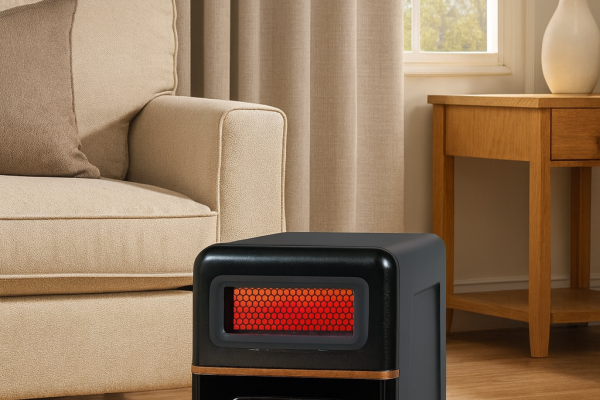 Brain fog affects millions of people, making daily tasks challenging and reducing productivity. While not a medical diagnosis, it describes a constellation of cognitive symptoms that can significantly impact your quality of life. The good news? Something as simple as improving your indoor air quality through natural ventilation could help clear mental cloudiness and sharpen your thinking.
Brain fog affects millions of people, making daily tasks challenging and reducing productivity. While not a medical diagnosis, it describes a constellation of cognitive symptoms that can significantly impact your quality of life. The good news? Something as simple as improving your indoor air quality through natural ventilation could help clear mental cloudiness and sharpen your thinking.
Understanding Brain Fog: More Than Just a Bad Day
Brain fog manifests as cognitive difficulties that make thinking, memory, and concentration challenging. Unlike occasional forgetfulness, brain fog persists and noticeably affects your functioning. You might experience:
- Forgetting names, dates, or why you entered a room
- Struggling to focus or think with clarity
- Finding it difficult to concentrate for extended periods
- Trouble finding the right words during conversations
- Difficulty managing multiple tasks simultaneously
- Challenges processing new information
- Problems planning activities or solving problems
The frustration of brain fog often compounds its effects—you know your brain isn’t working as it should, which creates additional stress and anxiety.
Root Causes: Why Your Brain Gets Foggy
Brain fog stems from numerous factors, making it sometimes difficult to pinpoint a single cause:
- Lifestyle factors – Insufficient sleep, lack of physical activity, poor nutrition, and high stress levels all contribute to cognitive difficulties.
- Hormonal fluctuations – Changes during menopause, pregnancy, or menstruation can trigger brain fog symptoms.
- Medication side effects – Many prescription and over-the-counter medications list cognitive impairment among possible side effects.
- Medical conditions – Chronic pain, depression, anxiety, diabetes, fibromyalgia, and long COVID often feature brain fog as a prominent symptom.
- Environmental factors – Growing evidence points to electromagnetic radiation, toxins, pollution, and extreme temperatures as potential triggers.
- Cellular inflammation – Researchers believe inflammation and hormone imbalances play significant roles in brain fog development.
The Critical Air Quality-Brain Function Connection
Research increasingly shows that what you breathe directly impacts how you think. Poor indoor air quality (IAQ) leads to cognitive issues including brain fog, sluggishness, and mood alterations.
Common indoor air pollutants affecting your brain include:
The research is compelling:
- Brief exposure to polluted air immediately affects critical cognitive functions
- Long-term exposure increases risks of neurological conditions like Alzheimer’s
- Poor air quality contributes to neuroinflammation and oxidative stress
- Higher indoor CO2 concentrations (indicating poor ventilation) significantly impact cognitive performance
Joseph Allen from the Harvard Healthy Buildings program emphasizes that the air in our daily environments has an immediate impact on our cognitive abilities. This growing consensus among experts reinforces air quality’s crucial role in brain health.
Natural Ventilation: Your Brain’s Best Friend
Natural ventilation harnesses wind and thermal buoyancy to exchange indoor and outdoor air without mechanical assistance. This simple process:
- Removes stale, oxygen-depleted air that causes drowsiness and poor concentration
- Introduces fresh, oxygen-rich air that revitalizes mental functions
- Dilutes indoor pollutants including CO2, VOCs, and particulate matter
- Helps manage humidity levels, preventing mold growth that can worsen brain fog
- Can achieve higher air change rates than mechanical systems under favorable conditions
Your brain demands significant oxygen for optimal function—approximately three times more than your muscles. Fresh air provides this oxygen boost while potentially:
- Increasing serotonin levels (improving mood)
- Rejuvenating mental clarity and alertness
- Reducing stress and anxiety symptoms
- Restoring focus and attention
Studies confirm ventilation’s positive impact on cognition:
- Increased ventilation rates in learning environments correlate with improved academic performance
- Workers in environments with enhanced ventilation demonstrate significantly better cognitive function scores
- Higher house ventilation frequency links to lower likelihood of cognitive impairment, especially among older adults
- Increased ventilation rates improve task speed and accuracy
- Lower CO2 levels associate with better cognitive performance
Practical Home Ventilation Strategies
Implement these straightforward techniques to improve ventilation in your living spaces:
- Maximize cross-ventilation flow paths
- Open windows and doors on opposite sides of your home
- Create clear pathways for air movement by keeping interior doors open
- Remove obstacles blocking airflow between rooms
- Utilize the chimney effect
- Open windows at different heights throughout your home
- Allow cooler air to enter lower windows while warmer air exits higher ones
- Take advantage of temperature differences between floors
- Improve ventilation infrastructure
- Install door screens to keep insects out while maintaining airflow
- Use ceiling fans (counterclockwise in summer) to enhance air circulation
- Install and regularly use exhaust fans in bathrooms and kitchens
- Consider transom windows above doors to improve room-to-room airflow
- Add vents or louvers in problem areas with insufficient natural airflow
- Optimize outdoor-indoor connections
- Plan landscaping to direct prevailing winds toward windows
- Keep exterior window areas clear of obstructions
- Consider automated window systems for hard-to-reach openings
Real-World Evidence Supporting Ventilation for Brain Fog
Though “brain fog” isn’t always formally studied, research consistently shows ventilation improves cognitive symptoms:
- Enhanced indoor air quality reduces brain fog symptoms in individuals with chemical intolerance
- Better-ventilated offices with lower pollutant levels correlate with significantly higher cognitive test scores
- Increased classroom ventilation rates link directly to improved student performance
- “Green” office environments with good ventilation demonstrate superior decision-making capabilities
- Health professionals commonly recommend fresh air exposure for brain fog relief
- COVID-19 long-haulers frequently report cognitive improvement with fresh air exposure
Optimizing Natural Ventilation for Maximum Brain Clarity
Follow these expert recommendations to maximize brain fog relief:
- Implement strategic ventilation practices

- Open windows based on prevailing wind directions
- Use stack ventilation when temperature differences exist
- Apply pulse ventilation (short window-opening periods) in colder weather
- Enhance air circulation with strategically placed fans
- Keep air pathways unobstructed by furniture or landscaping
- Consider environmental conditions
- Natural ventilation works best in moderate, dry climates
- Check local air quality indices before ventilating
- Ventilate during cleaner air periods (often early morning)
- Use night flushing in summer to release accumulated heat
- Supplement when necessary
 Dyson TP09 Air Purifier and Fan [click to view…]
Dyson TP09 Air Purifier and Fan [click to view…]- Add air purifiers with HEPA filters when outdoor air quality is poor
- Use dehumidifiers in humid environments to prevent mold
- Consider mechanical ventilation during extreme weather
- Employ hybrid approaches combining natural and mechanical ventilation
- Personalize your approach
- Account for individual sensitivities (asthma, allergies)
- Balance fresh air benefits against noise concerns in urban areas
- Maintain personal control over ventilation options when possible
Nutrition and Brain Fog
While natural ventilation provides a powerful environmental approach to clearing brain fog, nutrition offers a complementary internal strategy. Together, they create a comprehensive system that addresses cognitive clarity from both outside and within.
Marine Phytoplankton: Nature’s Brain Food
Oceans Alive® Recharge [click to view…]
One particularly promising nutritional approach for brain fog comes from the ocean. Marine phytoplankton—microscopic algae that form the foundation of the ocean’s food chain—provides a concentrated source of brain-supporting nutrients in a highly bioavailable form.
These tiny organisms contain an impressive nutritional profile:
- Complete spectrum of essential fatty acids including omega-3s
- Rich source of magnesium and trace minerals
- Rare phytonutrients and antioxidants not found in land plants
- All essential amino acids needed for neurotransmitter production
User Experiences with Marine Phytoplankton
Many people report significant improvements in mental clarity after supplementing with marine phytoplankton. User testimonials include:
- “Brain fog gone within 24 hours”
- “My brain fog started clearing and my body felt energized”
- “More clarity in my thinking… I used to experience extreme brain fog and had difficulty with my memory. Well… no more.”
- “I feel like I have less brain fog”
What makes marine phytoplankton particularly effective for brain fog is its nutrient density and bioavailability. Because these single-celled organisms are so small, their nutrients are easily absorbed and utilized by the body, rapidly delivering support to brain cells that may be underperforming due to nutritional deficiencies.
Conclusion: A Holistic Approach to Mental Clarity
Clearing brain fog effectively requires addressing multiple contributing factors. While natural ventilation removes external airborne causes of cognitive impairment, nutritional support helps fortify your brain against internal challenges.
By combining these complementary strategies—improving your air quality through ventilation while nourishing your brain cells with essential nutrients—you create a comprehensive approach to maintaining mental clarity. The result is a brain that can function at its best, free from the frustrating symptoms of brain fog that limit your potential.
Dora Decora is a biophilic interior design specialist and passionate blogger. With a deep commitment to integrating nature into living spaces, Dora specializes in creating environments that foster human-nature connections through thoughtful design elements. Her approach emphasizes sustainable materials, natural lighting, and organic patterns that enhance wellbeing and reduce environmental impact.
This post (https://homechroma.com/the-best-way-to-clear-brain-fog-with-natural-ventilation) was originally published by Dora Decora on Home Chroma. As an Amazon Associates partner, we are compensated for all qualifying purchases.























